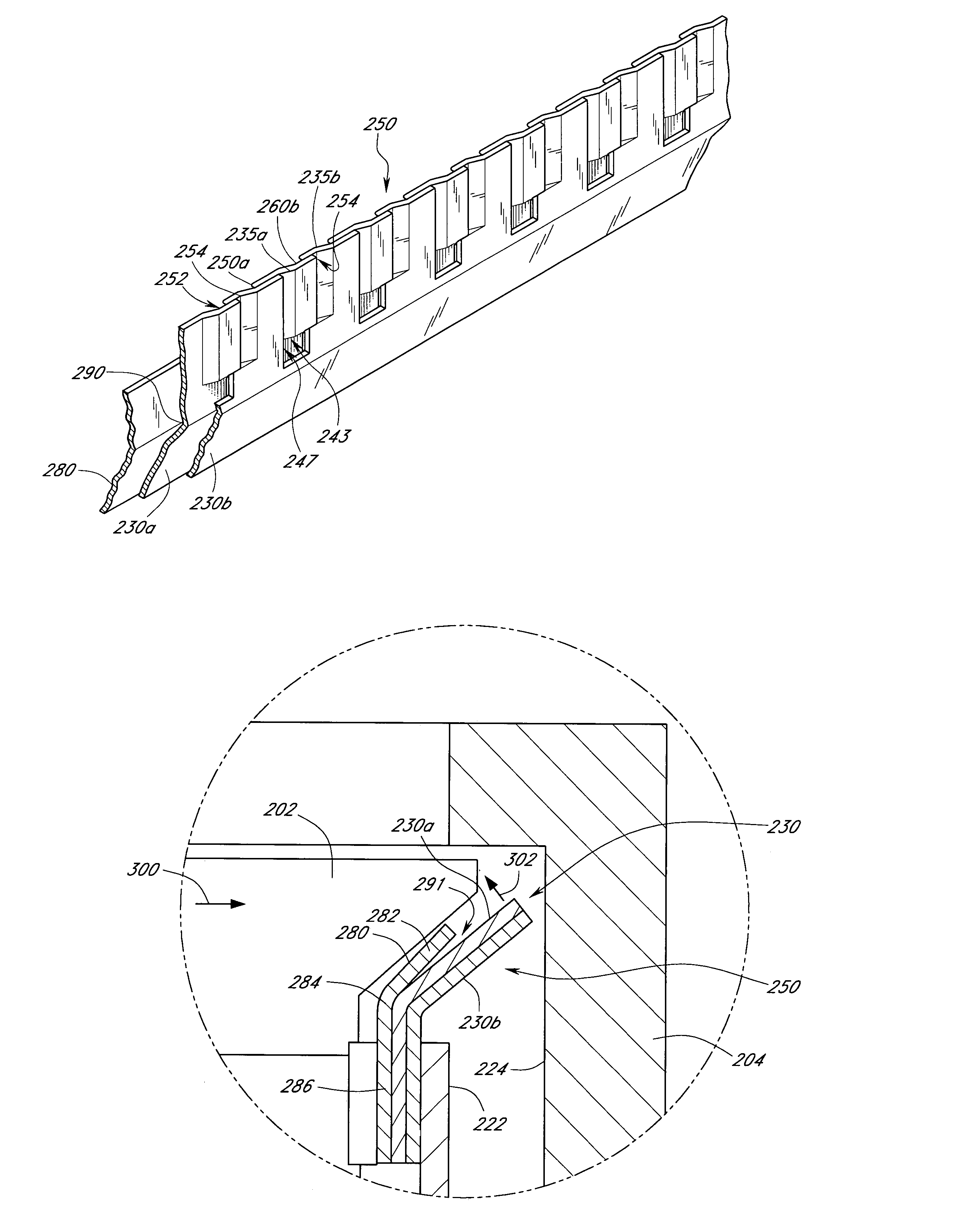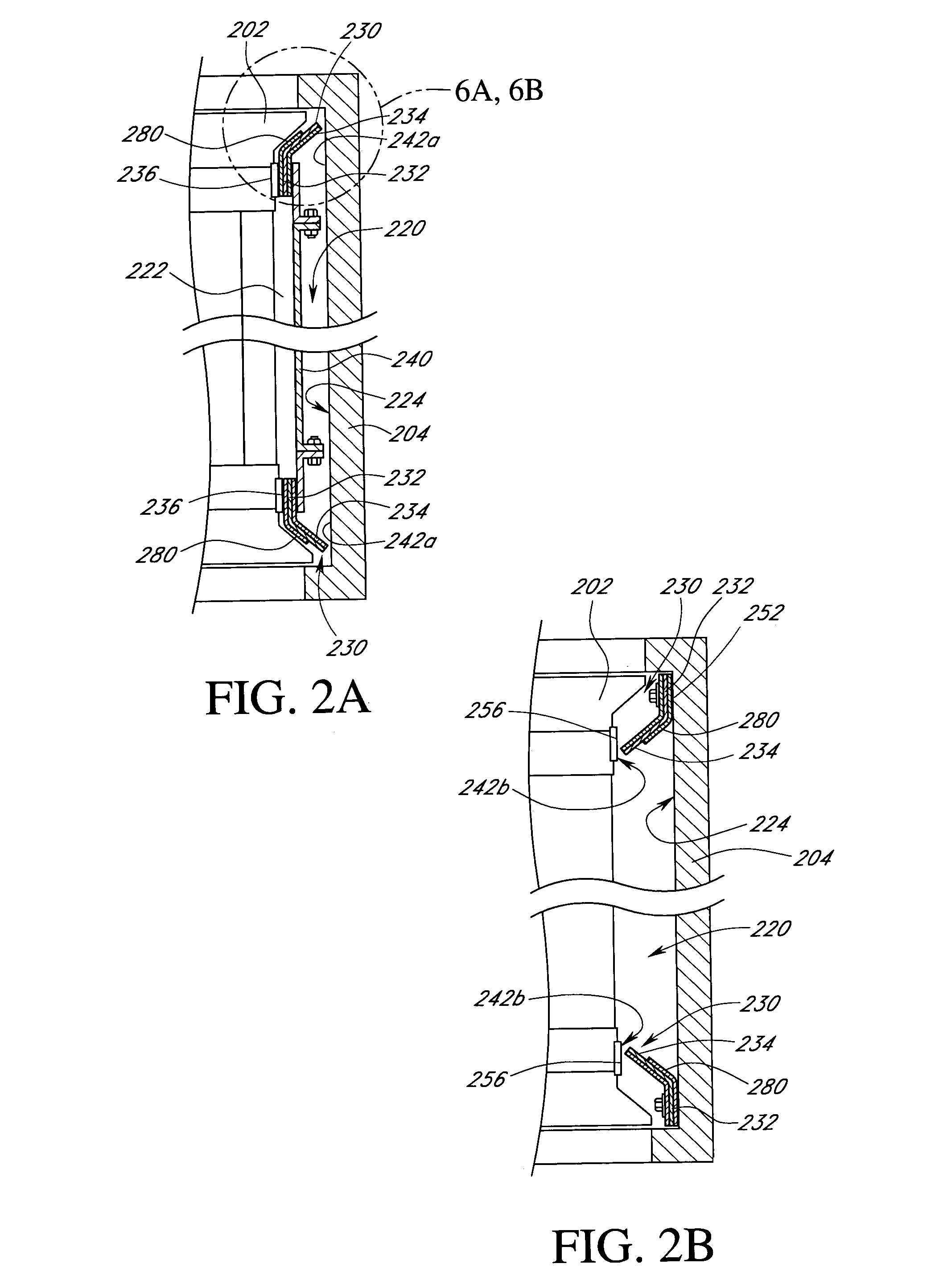Reinforced sealing element
a sealing element and reinforcement technology, applied in the field of heat exchange technology, can solve the problems of rotor generally deformation during operation, sealing becoming unduly worn or damaging the inner walls of the housing, and avoiding the gap between the rotor and the inner wall of the housing, so as to inhibit the damage of the sealing section
- Summary
- Abstract
- Description
- Claims
- Application Information
AI Technical Summary
Benefits of technology
Problems solved by technology
Method used
Image
Examples
Embodiment Construction
[0030]Reference will now be made to the drawings wherein like numerals refer to like parts throughout. FIG. 1 illustrates a perspective view of one embodiment of a regenerative heat exchanger 200 in which an improved perimeter seal assembly 230 having at least one reinforcing support member or section 280 (as shown in following FIGS. 2A–6) that may be utilized to reduce gas leakage. As illustrated in FIG. 1, the heat exchanger 200 may comprise a heat exchanger body 202 that is positioned within a housing 204. In this particular embodiment, the heat exchanger body 202 may comprise a cylindrical rotor that is rotatably mounted within the cylindrical housing 204 so as to be coaxial with the cylindrical housing 204. In addition, the heat exchanger housing 204 may be formed so as to define two openings 206, 208, wherein the two openings 206, 208 are respectively connected to duct work (not shown) and respectively form a portion of the intake or cold air conduit and the exhaust or hot gas...
PUM
 Login to View More
Login to View More Abstract
Description
Claims
Application Information
 Login to View More
Login to View More - R&D
- Intellectual Property
- Life Sciences
- Materials
- Tech Scout
- Unparalleled Data Quality
- Higher Quality Content
- 60% Fewer Hallucinations
Browse by: Latest US Patents, China's latest patents, Technical Efficacy Thesaurus, Application Domain, Technology Topic, Popular Technical Reports.
© 2025 PatSnap. All rights reserved.Legal|Privacy policy|Modern Slavery Act Transparency Statement|Sitemap|About US| Contact US: help@patsnap.com



